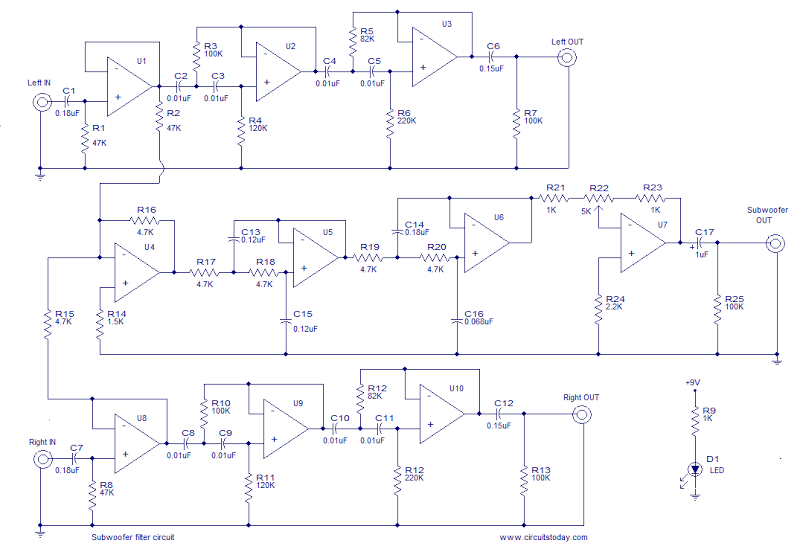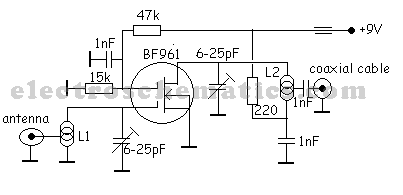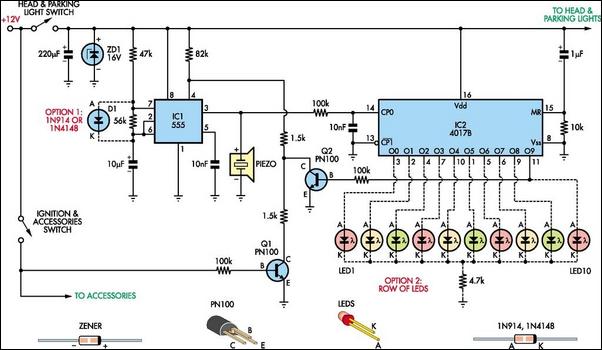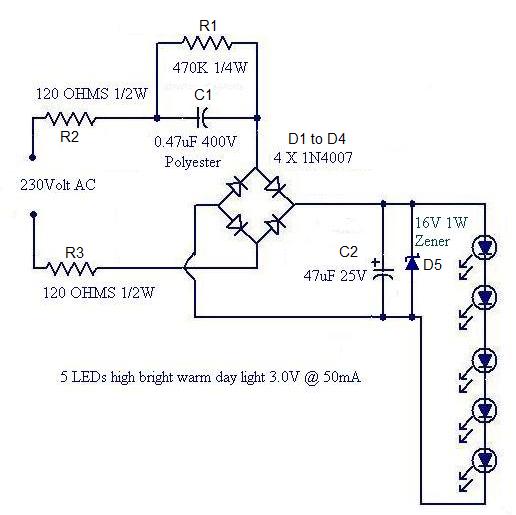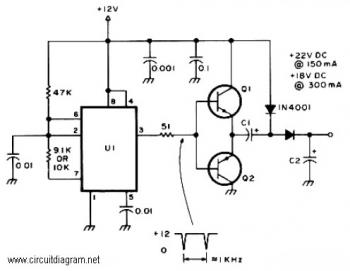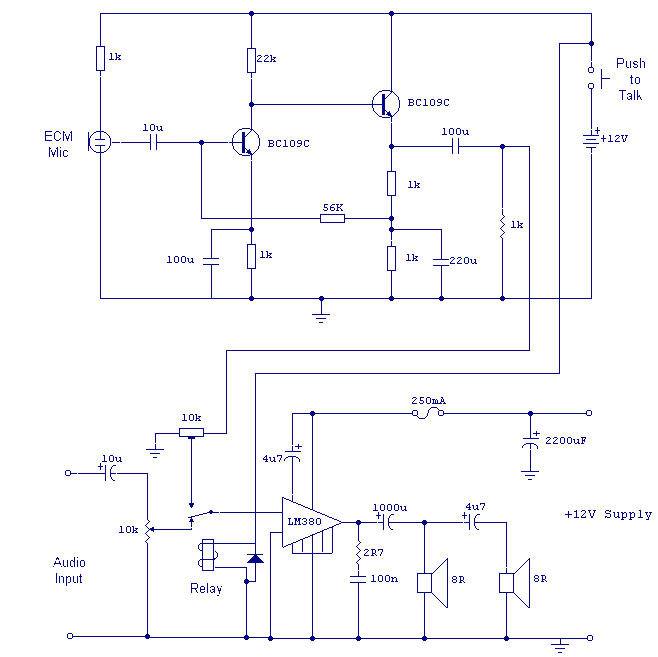
Touch light switch delay circuit
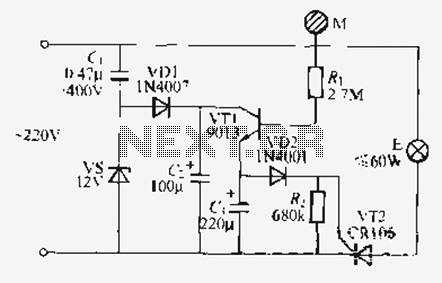
Utilize the call sheet to touch the electrical threshold M, which causes the E lamp to light up. When the same interval subparagraph is triggered, the lights will automatically turn off. A voltage regulator rectifier circuit is formed using components such as VD, VS, C to create a capacitive drop. The circuit includes a triode thyristor VT1, which is in an off state under normal conditions. This prevents any trigger voltage output to VL2, meaning the crystal thyristor VT2 remains off and the lamp does not light when the electrode is touched. When the touch electrode films are activated, alternating current flows through the sensor body, injecting current into the diode VT1 base, thereby turning on VT1. This allows current to trigger VT2, which turns on the lamp E. At the same time, VT1 charges quickly. When the user removes their hand from the electrode sheet M, the circuit still retains some charge, allowing VT2 to remain conducting and keeping the lamp lit. The duration of the light depends on the values of the capacitor Ci and resistor R; larger values result in longer lighting times. Conversely, reducing the capacitance or increasing the resistance will shorten the duration. It is important to note that the resistance cannot be too high, or it may prevent the thyristor VT2 from turning off. The circuit uses a CRiOli, 2N656J trigger current type thyristor and other components with no special requirements.
The circuit operates as a touch-sensitive light switch, utilizing a combination of capacitive sensing and thyristor control. The primary components include the touch electrode, the triode thyristor VT1, and the crystal thyristor VT2. The touch electrode serves as a sensor that detects human presence, allowing for the activation of the circuit.
When a user touches the electrode, a small alternating current is conducted through the sensor, which triggers the base of VT1. This action turns on VT1, allowing current to flow through the circuit and subsequently triggering VT2. As a result, the E lamp lights up. The design incorporates a capacitive drop voltage regulator circuit to ensure stable operation and prevent voltage spikes that could damage the components.
The discharge behavior of the circuit is also critical to its operation. When the user removes their hand from the electrode, the circuit maintains a residual charge that allows VT2 to remain conductive momentarily, thus keeping the lamp illuminated. The duration of the illumination is determined by the capacitance of Ci and the resistance of R. The larger the capacitance and the smaller the resistance, the longer the light will stay on. Conversely, decreasing the capacitance or increasing the resistance will lead to a shorter illumination period.
Design considerations include ensuring that the resistance value is not excessively high, as this could prevent VT2 from turning off properly. The circuit employs the CRiOli, 2N656J thyristor, which is capable of handling the required current and voltage levels. Overall, the design is straightforward and effective for creating a touch-sensitive lighting control system.Just use the call sheet to touch the electrical threshold M, namely E lamp lights when asked the same interval subparagraph, lights automatically turn off. VD], vs, (., C, to form a lH capacity drop voltage regulator rectifier circuit, (1 at both ends to lose thirty i V left the business flow ^} U pressure triode thyristor VT1 and product composition WI2 delay touch the switch usually, VT1 place in the off state, VL) 2 no trigger voltage output, crystal thyristor VT2 off, the lamp is not lit when E manpower touch. touch electrode films, alternating current flowing through the sensor body care injection - diode VT1 base make VT1 conduction, VIJ2 lose j n H current to trigger VT2 opened, followed by lighting the lamp E, at the same time (through VT1 Ying-speed charging.
when manpower away from the electrode sheet M, f. still bears VD2 l, doors shake _T2 discharge iU so they can maintain VT2 conduction, so that the lamp continues to emit light. when the (r basic charge is bled off in the AC H 0:00, V T2 shut off lights E was extinguished, bright electric lights the length of time, depending on the main playing Ci and R: numerical value of larger, more lighting time.
long; J beans is a short illustrated using old data, just ask about the extension of Trent 9 (is if you want to delay pregnancy. called among the most light to increase C, capacity; the contrary, can be reduced (or R value 1. It should be noted, R, the resistance can not be too large, otherwise thyristor tube VT2 7 should be easy to turn off .VT2 CRiOli, 2N656j trigger current type and other smaller sentenced Guo Jing-way thyristor (O.
S-iA / 40 (1V), the other component parameters Figure no special requirements.
The circuit operates as a touch-sensitive light switch, utilizing a combination of capacitive sensing and thyristor control. The primary components include the touch electrode, the triode thyristor VT1, and the crystal thyristor VT2. The touch electrode serves as a sensor that detects human presence, allowing for the activation of the circuit.
When a user touches the electrode, a small alternating current is conducted through the sensor, which triggers the base of VT1. This action turns on VT1, allowing current to flow through the circuit and subsequently triggering VT2. As a result, the E lamp lights up. The design incorporates a capacitive drop voltage regulator circuit to ensure stable operation and prevent voltage spikes that could damage the components.
The discharge behavior of the circuit is also critical to its operation. When the user removes their hand from the electrode, the circuit maintains a residual charge that allows VT2 to remain conductive momentarily, thus keeping the lamp illuminated. The duration of the illumination is determined by the capacitance of Ci and the resistance of R. The larger the capacitance and the smaller the resistance, the longer the light will stay on. Conversely, decreasing the capacitance or increasing the resistance will lead to a shorter illumination period.
Design considerations include ensuring that the resistance value is not excessively high, as this could prevent VT2 from turning off properly. The circuit employs the CRiOli, 2N656J thyristor, which is capable of handling the required current and voltage levels. Overall, the design is straightforward and effective for creating a touch-sensitive lighting control system.Just use the call sheet to touch the electrical threshold M, namely E lamp lights when asked the same interval subparagraph, lights automatically turn off. VD], vs, (., C, to form a lH capacity drop voltage regulator rectifier circuit, (1 at both ends to lose thirty i V left the business flow ^} U pressure triode thyristor VT1 and product composition WI2 delay touch the switch usually, VT1 place in the off state, VL) 2 no trigger voltage output, crystal thyristor VT2 off, the lamp is not lit when E manpower touch. touch electrode films, alternating current flowing through the sensor body care injection - diode VT1 base make VT1 conduction, VIJ2 lose j n H current to trigger VT2 opened, followed by lighting the lamp E, at the same time (through VT1 Ying-speed charging.
when manpower away from the electrode sheet M, f. still bears VD2 l, doors shake _T2 discharge iU so they can maintain VT2 conduction, so that the lamp continues to emit light. when the (r basic charge is bled off in the AC H 0:00, V T2 shut off lights E was extinguished, bright electric lights the length of time, depending on the main playing Ci and R: numerical value of larger, more lighting time.
long; J beans is a short illustrated using old data, just ask about the extension of Trent 9 (is if you want to delay pregnancy. called among the most light to increase C, capacity; the contrary, can be reduced (or R value 1. It should be noted, R, the resistance can not be too large, otherwise thyristor tube VT2 7 should be easy to turn off .VT2 CRiOli, 2N656j trigger current type and other smaller sentenced Guo Jing-way thyristor (O.
S-iA / 40 (1V), the other component parameters Figure no special requirements.
